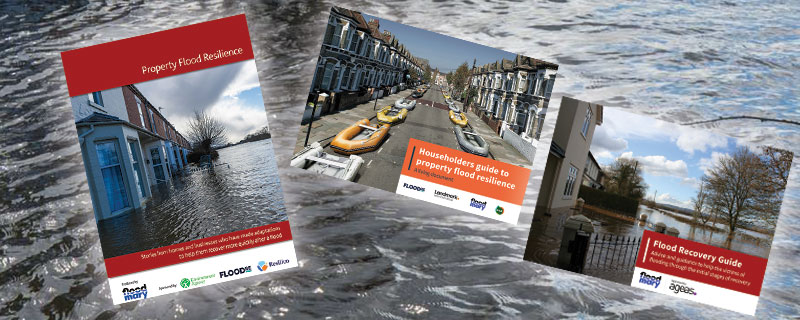How to Self Build a Flood Resistant Wall
The incredible story of how Nick and his wife Annie are fighting to protect their home from flooding and offers practical insights on how to self-build a flood resistant wall
Drawing on their personal experiences of flooding at their Worcestershire home, Nick and Annie Lupton have today published an e-book, “The Great Wall of Pixham: Our Journey and Practical Guide to Building a Flood Wall”. It reports on their experiences of building a flood wall around the perimeter of their 17th century home, providing invaluable insights and step-by-step guidance for others considering a flood wall to help protect their home.
The Lupton’s bought Pixham House in 2016, fully aware that the area was prone to flooding. While in a beautiful location, it is in the middle of the River Severn flood plain. The house already had a series of flood resilience measures in place, which worked well in holding back the water, however their long-term fear was that the house would start to suffer structurally. Taking the matter in their own hands, they took the bold decision to build a wall around the entire perimeter of the property.
The wall has since withstood three floods, working exceptionally well to protect the structure of the house while making the couple’s lives more manageable during a flood.
Nick has written the e-book to offer a detailed view on the steps they took, which he hopes will support other homeowners, seeking to protect their properties from the effects of flooding.
Confirms Nick:
“For us, the wall has been a complete game changer. When flooding occurs, we now have a dry layer of land between the house and the wall giving us peace of mind. We featured on the BBC in January 2024 and, since then, have been inundated with interest from people in how we did it, what we did, and seeking advice. The e-book documents the entire process and we hope many people will benefit from observing our project, from the perspective of a non-construction professional.”
‘The Great Wall of Pixham’ e-book provides step-by-step guidance, including:
– Where do you start – is a flood wall right for your home?
– Permissions and consents;
– Designing the wall;
– Materials used;
– Project management;
– The building phase;
– Lessons learnt.
The e-book, which is hosted on the FloodMary.com website, is packed with practical advice, backed by thorough research and real-world application, making it an essential resource for anyone looking to mitigate the risk of flooding.
Adds Mary Long-Dhonau OBE, property flood resilience champion and former flood victim, FloodMary.com,
“Nick originally featured in my e-book, which details example of Property Flood Resilience measures that real homeowners have installed. Now, Nick has gone a massive step further with building this significant wall to help resist the mighty River Severn. The interest in their flood wall has been staggering and so I’m delighted to host the e-book on my FloodMary.com website. Nick and Annie’s guide is inspiring and, by sharing their learnings, the hope is to make the process a little less daunting for others thinking of doing the same.”
Concludes Nick;
“Pixham House has a rich history and we want to preserve it for the future. If we hadn’t have built the flood wall, I fear the longevity of the building would have been compromised. Now, we have seen the wall in action and we are proud of what we have achieved. Flooding can be a devastating experience, but with the right knowledge and preparation, we show that it is possible to safeguard your home – and your sanity!”
Thanks to the sponsors of the e-book, including Lakeside Flood Solutions, Direct Pumps & Tanks, Ibstock, Retaining Wall Solutions, and Flood Mary, for making the publication of our guide possible.
“The Great Wall of Pixham: Our Journey and Practical Guide to Building a Flood Wall ”
is available to download now CLICK HERE







Leave a Reply
Want to join the discussion?Feel free to contribute!